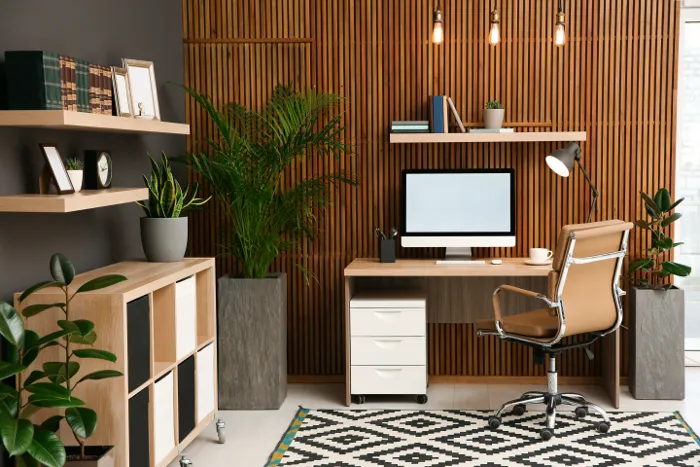The Art of Home Office Interior Design

Creating a harmonious home office is essential for productivity, focus, and well-being. A well-designed workspace can inspire creativity and make you feel at ease while working. In this article, we delve into the nuances of home office interior design and provide valuable tips to help you create a functional and aesthetically pleasing workspace.
1. Color and Mood
The color palette of your home office plays a significant role in setting the mood and atmosphere. Opt for colors that evoke calmness, such as light blues, greens, or pastels. Alternatively, choose warmer hues like yellow or orange to promote creativity and energy. Ensure the chosen colors complement the overall design and style of your home.
2. Balance Function and Aesthetic
When designing your home office, it's crucial to strike a balance between functionality and aesthetics. Choose furniture that is not only visually appealing but also provides ample storage and workspace. Consider ergonomic chairs and desks to support your posture and minimize discomfort during long working hours.
3. Textures and Materials
Incorporate different textures and materials into your home office design to create a rich and inviting atmosphere. Mix and match wood, metal, glass, and fabric elements to add depth and character to your workspace. For example, pair a wooden desk with a metal chair or a glass bookshelf with fabric storage bins.
4. Lighting and Ambiance
Proper lighting is vital for a productive home office. Take advantage of natural light by positioning your desk near a window and using sheer curtains to diffuse any harsh sunlight. Invest in various light sources, such as floor lamps, desk lamps, and ambient lighting, to create a well-lit and comfortable environment.
5. Organize and Declutter
Keeping your home office organized and clutter-free is key to maintaining a focused workspace. Incorporate shelving, filing cabinets, and desk organizers to store paperwork, stationery, and electronic devices. Use decorative storage solutions, such as woven baskets or stylish boxes, to conceal clutter while enhancing your office's visual appeal.
6. Create Zones
If space permits, designate separate zones within your home office for different tasks and activities. Establish a quiet area for focused work, a comfortable seating arrangement for reading or brainstorming, and a designated spot for office supplies and equipment.
7. Personal Touches
Incorporate personal elements into your home office design to make the space truly yours. Display artwork, family photos, or a collection of your favorite items to inspire and motivate you throughout the day. Choose decorative accents that reflect your personality and complement the overall design of your workspace.
8. Greenery and Nature
Introduce indoor plants into your home office to create a soothing and natural ambiance. Plants not only add visual appeal, but they can also help purify the air and reduce stress levels. Choose low-maintenance plants, such as succulents or snake plants, that thrive in indoor environments.
9. The Power of Flexibility
A flexible home office design allows you to adapt the space as your needs evolve. Invest in multifunctional furniture, such as a convertible desk or modular shelving, and keep the layout open and adaptable. This approach enables you to easily reconfigure your workspace over time.
In conclusion, designing a harmonious home office requires careful consideration of various elements, including color, functionality, lighting, and personal touches. By keeping these factors in mind, you can create a productive and inspiring workspace that caters to your unique needs and preferences.
